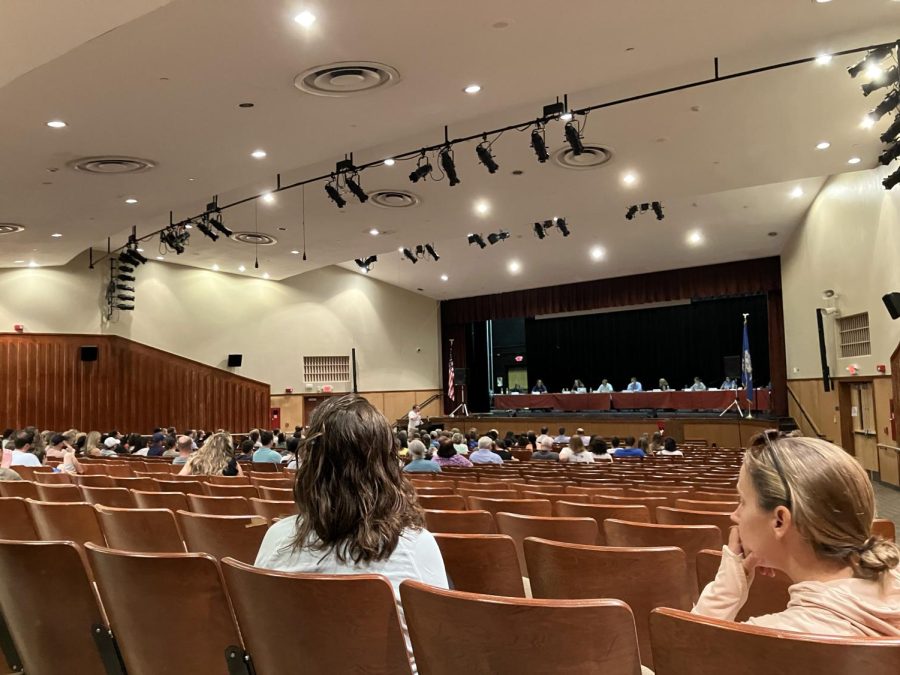Fairfield Redistricting Critics Want It To Be Legally Challenged. Is This Feasible?
July 2, 2023
“Antiquated.” “Horrific.”
These were just some of the words that Fairfield residents used on Tuesday to describe Connecticut’s school racial balance statute, the reason for the town’s school redistricting.
During the public comment throughout Tuesday’s Board of Education meeting, many Jennings parents spoke out against scenario 1A, one of the proposals which would close Jennings Elementary School and repurpose it as a Early Childhood Care (ECC) center. Some people also spoke against proposal 3, which would create non-contiguous zones of attendance for Stratfield and McKinley elementary schools, saying it would negatively impact “neighborhood schooling.”
However, some speakers took it even further, raising issue with the town even having to redistrict. Most of these fingers pointed at the state racial balance law, the primary reason why the town is undertaking redistricting. Some people called for working with the legislature to change the law, and others called for legal challenges against it.
As a bit of background, Connecticut’s racial balance law was passed in 1969 to rectify the problem of racial segregation in the state’s public school system. As in many other northern states, though there was no explicit segregation of education in Connecticut as there was in the South, housing patterns and concentrations of minorities in inner-city areas led to de facto segregation.
Some Fairfield residents have pointed to the age of law as a reason it should not apply, calling it “antiquated” and “out of date.” However, some studies have found that the segregation the law was passed to fight still exists today, with one 2020 report finding that 84 percent of black students in the state attend schools that are over 50 percent minority, putting Connecticut among the top ten most segregated states in the country on this metric.
With legal events involving race like the Supreme Court striking down Harvard and UNC’s race-conscious admission policies hanging in the air, there has been some talk from redistricting opponents about whether Connecticut’s racial balance law is constitutional.
The most recent Supreme Court case dealing with this issue, and one that could be important in any challenges, is Parents Involved in Community Schools v. Seattle School District No. 1, decided in 2007. The case, which has been brought up by opponents of Fairfield’s redistricting as a possible option for challenging the effort, concerned two school integration initiatives in Seattle, Washington and Louisville, Kentucky. In Seattle, the school district allowed students to apply to any high school, but when the schools filled up, tiebreakers had to be used to determine which students would get seats at the school. If the racial demographics of one school deviated enough from the demographics of the city’s whole student body, a racial tiebreaker went into effect, causing either white or non-white students to be favored depending on the school. In Louisville, students were assigned to schools by race in order to meet certain percentages intended to create diversity.
The Supreme Court struck down the programs in both cities, and ruled that using race to assign students to schools in pursuit of integration was unconstitutional, unless a school district was remedying a history of legal segregation. However, the Court also found that diversity in schools is a compelling government interest, and plans that seek diversity are allowed, they just must be “narrowly tailored” to achieve it.
In the ruling, Justice Anthony Kennedy also endorsed specific policies that could be used to pursue diverse student bodies at schools, including “drawing attendance zones with general recognition of the demographics of neighborhoods.”
From this precedent, it seems possible that if taken to court, the Board of Education’s redistricting would stand as constitutional. However, the larger question could be whether the state can mandate Fairfield to pursue these policies, as Parents Involved dealt only with voluntary initiatives undertaken by the school districts in question.
Regardless of the constitutionality of the state mandate or the redistricting itself, any effort to stop it would be racing against time. The scenarios are being fine-tuned and the board will advance a scenario by October 30th, leaving little time for much opposition to organize. A petition aiming to “find a better solution” has begun to circulate, but it remains to be seen how much efforts like these will accomplish.
Despite these constraints, objection to the effort is still high among many parents, and some think the Board of Education is not doing enough to resist the effort. “I’m going to ask you to push back,” one Holland Hill parent said at Tuesday’s meeting.
She continued, “If it gets legal challenges, I’m sure there will be much more support from that than any situation.”


